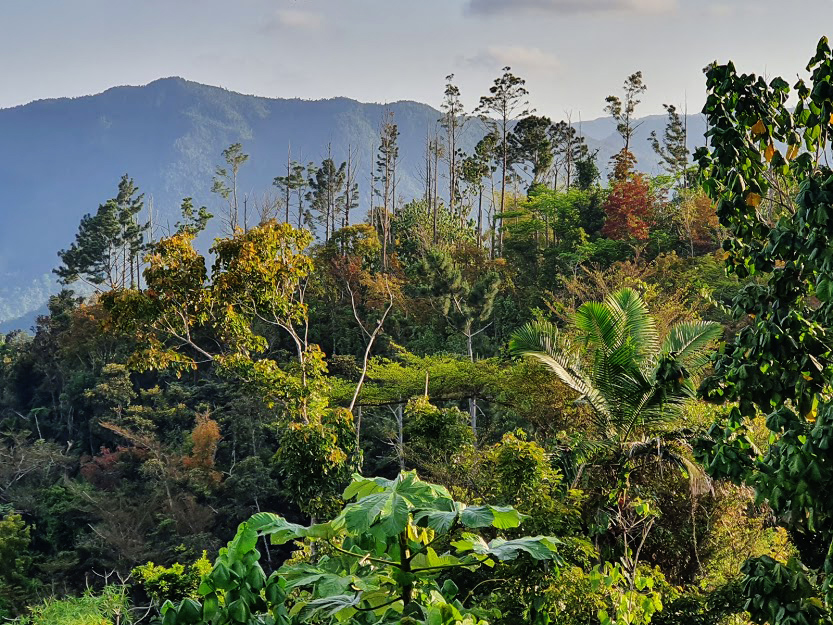
You may have noticed we at Naples Botanical Garden talk an awful lot about the Caribbean. There are many reasons for this, but one of the primary ones is a special status bestowed on it. The region is a “biodiversity hotspot.”
What exactly does that mean?
The abundance of plant species is not equally distributed on Planet Earth. Instead, there are pockets of richness scattered across the globe — certain places that contain far more species than the areas around them. There are also regions that are more threatened than others due to human impact. The Critical Ecosystem Partnership Fund (CEPF) combines these two factors, species richness and level of threat, to designate biodiversity hotspots. There are 36 of these hotspots, defined as “Earth’s most biologically rich — yet threatened — terrestrial regions.” To qualify, a region must possess at least 1,500 endemic vascular plant species and have lost at least 70% of its primary native vegetation.
Endemic and primary are two important terms in the world of biodiversity:
An endemic species is one that exists in only one region of the world. It can be limited to a geographic area, like an island or mountain range, or a political one, like a state or country. Whether a species is endemic to the island of Puerto Rico or to the mainland United States, it simply means that no matter how hard you were to search in other parts of the world, you would not find it. Because endemic species are limited in range, they often have a higher risk of extinction compared to more widely dispersed species. This is especially true for species that are endemic to a small area.
Primary vegetation refers to vegetation that has not been directly disturbed by humans. At the end of the last ice age, around 8,000 years ago, an estimated 24 million square miles of forest covered the Earth. A 2015 assessment found that only about 5 million square miles of that original forest remains, a number that is decreasing every year. The loss doesn’t necessarily mean the forest is entirely gone; secondary forest — new growth — may have emerged, though it tends to be less biodiverse and ecologically intact than the original woodlands. The term “primary vegetation” doesn’t only apply to forests; it can refer to any type of habitat.

South Florida lies between two biodiversity hotspots, meaning we are smack in the middle of an area rich in flora and human-induced habitat loss. The first, the Caribbean Islands hotspot, was one of the 25 original hotspots designated in 1999. According to CEPF, only 10% of the primary vegetation remains on these islands, and 70% of the plant species are endemic. While South Florida is not technically part of the hotspot, our proximity and similarities in flora, climate, and threats mean we face many similar challenges. These commonalities are why the Garden focuses a lot of its work on collaborating with fellow conservationists in the Caribbean. Together, we can better plan how to deal with our increasing threats while conserving our unique plants.
South Florida does fall within the world’s most recently declared biodiversity hotspot, the North American Coastal Plain, designated in 2016. South Florida is part of this region in a geologic sense, as the plain stretches from a small section of northern Mexico along the Gulf coast and up the East Coast to Cape Cod, Massachusetts. Floristically, however, South Florida is not a perfect match — our plant life is more closely related to that of the Caribbean than it is to other regions within North American Coastal Plain. Regardless, we share geology, threats, and many of the same species. The coastal plain harbors approximately 1,816 endemic plant species and has lost over 85% of its primary vegetation.
Biodiversity hotspots are teeming with amazing life-forms that are becoming more and more threatened every day. While all of Earth deserves conservation attention, these are the places that may benefit from it the most. And that is exactly why CEPF decided to create them, to prioritize which areas are most in need of conservation funding. Explore the hotspots here using an interactive map, and dive into understanding our unique place in the world of biodiversity. We are part of a magical area of the earth, and it needs our help to protect the biodiversity we love.
 About the Author
About the Author
Carly Roland is a Conservation Associate at Naples Botanical Garden. She loves continually learning about plants and the ways in which they can help us create a better world. She also loves the beauty of plants and feels lucky to work at a garden that celebrates both the knowledge and beauty of the plant kingdom.


